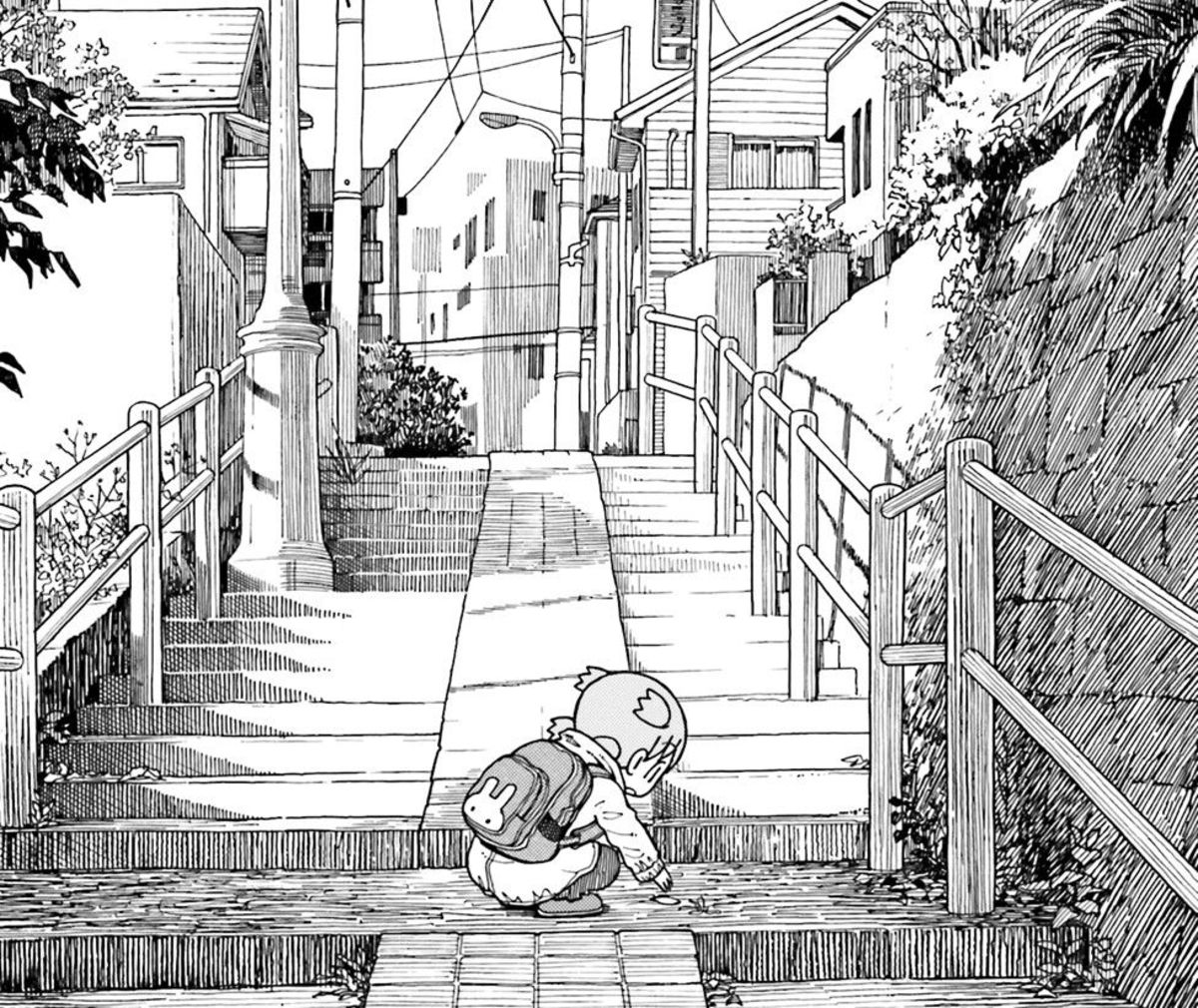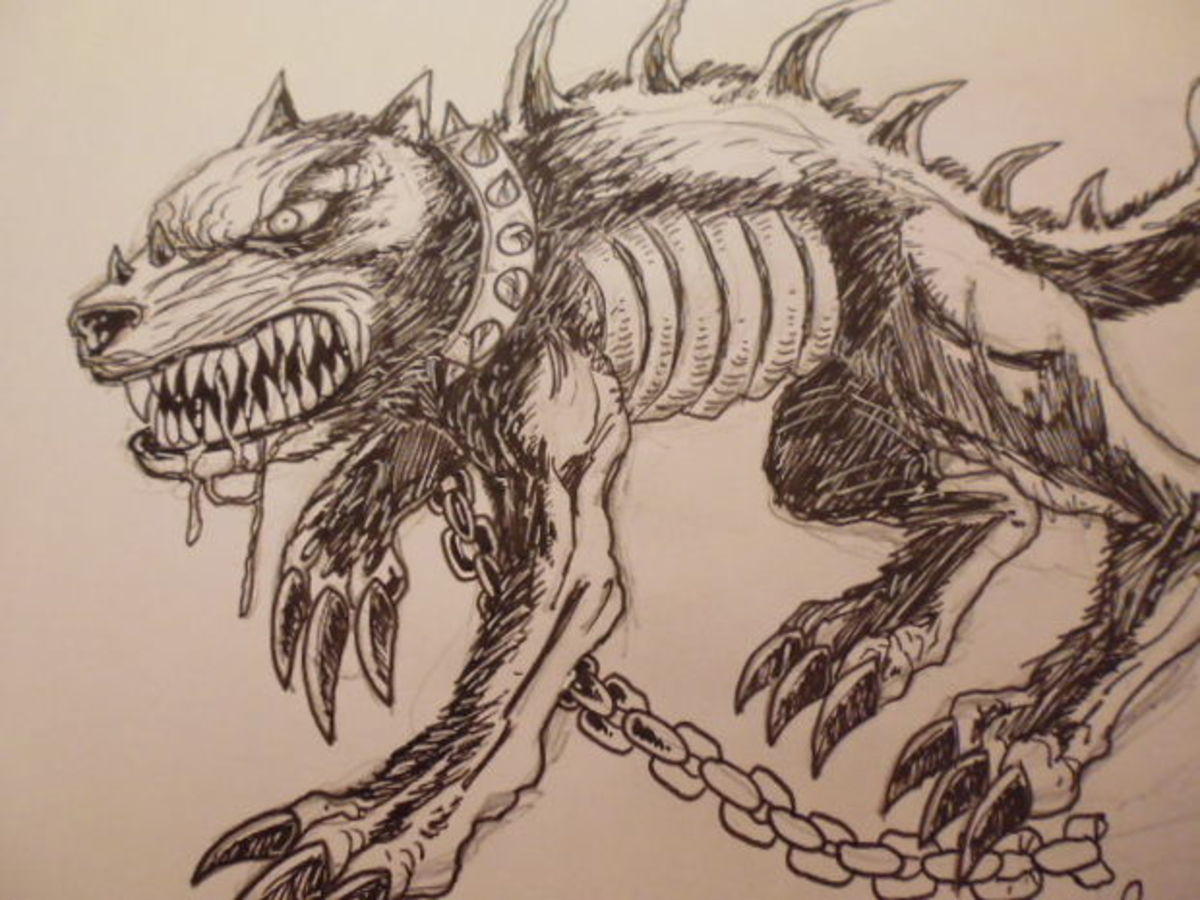- HubPages»
- Arts and Design»
- Drawing»
- Drawing Tutorials
How to Draw a Realistic Face: The Basics

Drawing
Anyone can learn to draw. It is not the skill in the hands, but the skill in the eyes. Drawing the face requires honing your skills of observation. Once you know what proportions and shapes to pay attention to, your drawing skills will greatly improve. Before you go through this lesson, take a minute and sketch a face. You will want a record of your current skill level to compare it to your finished product after this lesson. My students were always amazed at how quickly they improved when they compared their before and after sketches.
The Basic Supplies

Materials
Take the time to obtain the materials that you need. It will make a difference in your finished product and you will be less frustrated during the process. You will need the following:
- a good sketch pad
- several drawing pencils with a variety of lead hardness; 2B and 3B are both good for general drawing; 4H and 2H are good for thin, light lines
- hand held pencil sharpener
- a kneaded eraser
- tortillions
- a handheld mirror
- a piece of clean paper for a hand rest to protect your drawing
Materials
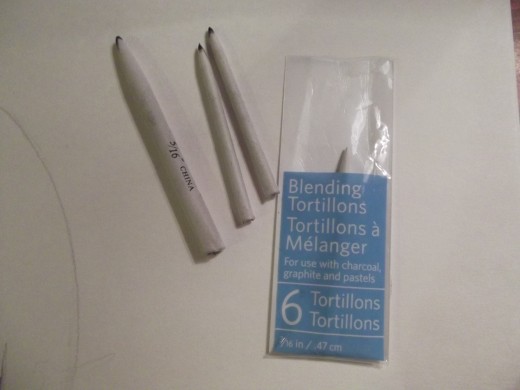
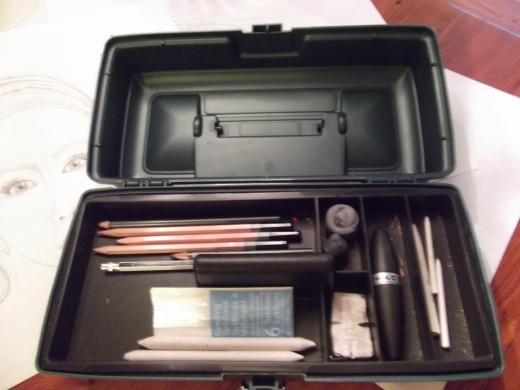
The Shape
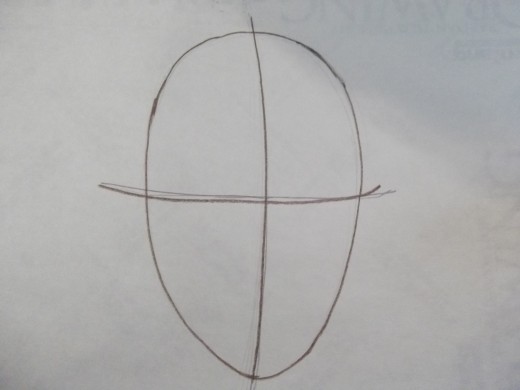
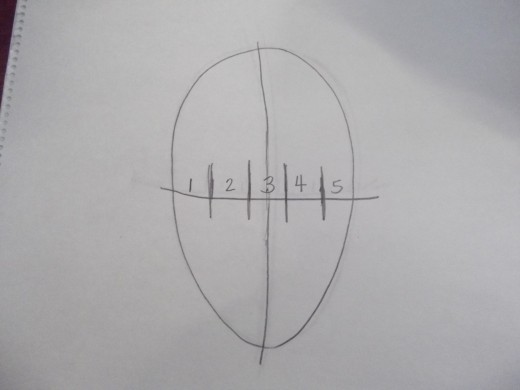
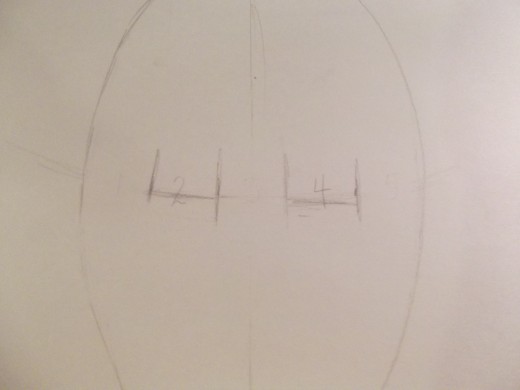
Start with a Shape
With a light touch, begin to draw the shape of the face. Think of the shape of an upside-down egg. Keep playing with the shape until it is a nice and even. Draw a light vertical line down the center of the face. Draw a light horizontal line across the middle of the face that intersects the first line.
The Eyes, Part One
The horizontal line is the space for the eyes. There are approximately five equal eye spaces across the width of the face. Divide line into five equal spaces, starting in the middle. The eyes are one eye width apart. Remember to use a light line.
Now erase spaces 1, 3, and 5. Spaces 2 and 4 will be the eyes. Draw an almond shape for each eye. Use your mirror to look at the shape of your tear duct and add that on your eye shape.
Draw the bottom eyelid. Again, take out the mirror and notice how the bottom eyelid starts in the outer corner and gets thinner toward the inner corner.
Put in the iris in each eye. Think of the iris as a ball with the top and bottom cut off. If you draw the full circle of the iris, then your person will look very surprised or very caffeinated!
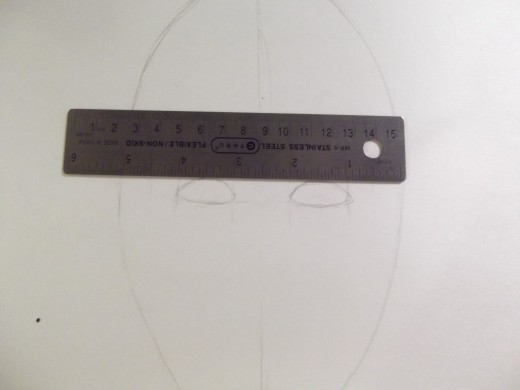
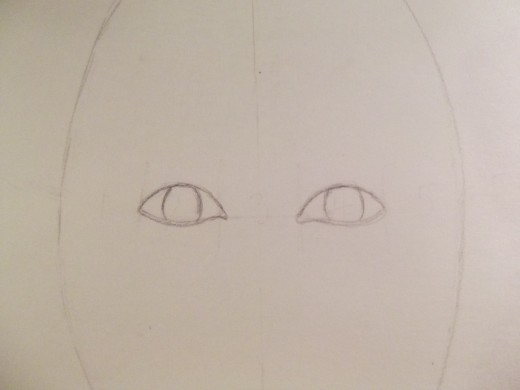
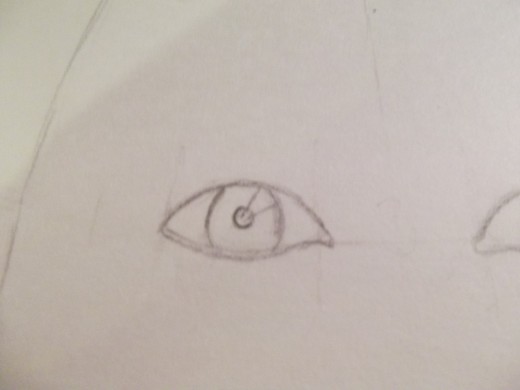
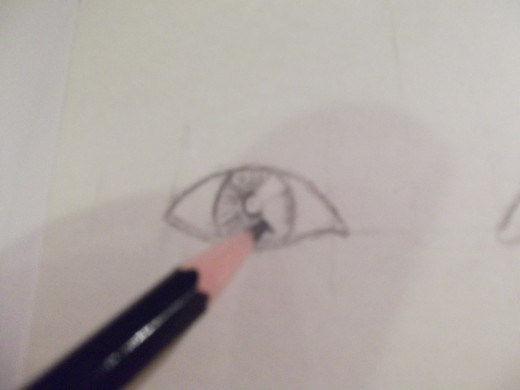
The Eyes, Part 2
Lightly add a pupil in each eye. At the top right of each pupil, draw a triangle that starts in the pupil and goes to the edge of the iris. This will be a light reflection. You can adjust the size of this later. Starting at the outside of the pupil, make radiating lines all the way around the iris. Darken the pupils, but make sure to leave the triangle space white. This will make your pupil look a little like a Pacman.
Remember to use the clean sheet of paper for a hand rest. The will prevent smudges on your portrait.
Give the eyeball form by shading the corners of the eyes. I use the tortillions for this part. Darken the line around the iris. Lightly draw in an arc for the eyelid.
Now step back and take a look. Does the light reflection area need adjusting? Does anything need adjusting?
The video demonstrates how to put in eyelashes.
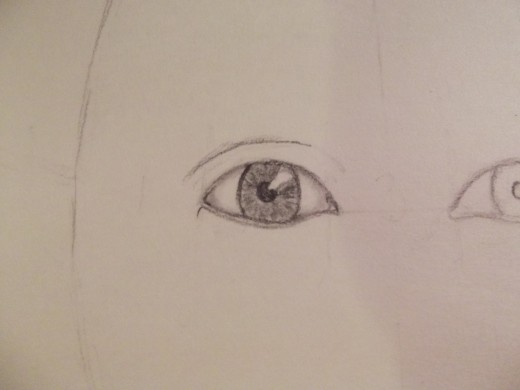
Eyelash Demonstrations
Eyebrows
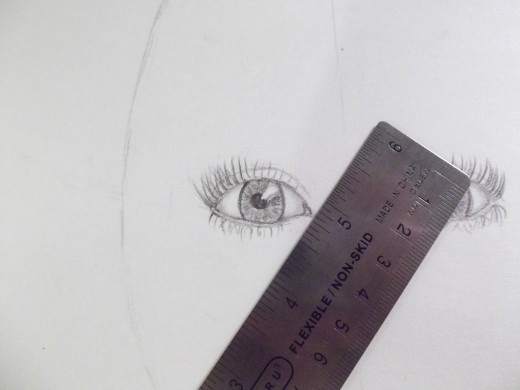

Eyebrows
For the eyebrows you will want to keep in mind the gender that you are drawing. Male eyebrows tend to be heavier and closer to the eye, while female eyebrows are usually shaped, thinner and have more space between the eye and eyebrow.
Start by drawing three angles to place the eyebrow. Then put in a light line for the eyebrow shape. Using a finely sharpened pencil, place the individual hairs on the eyebrow in the direction of hair growth.
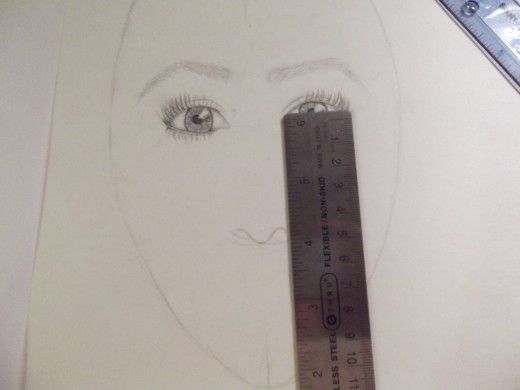
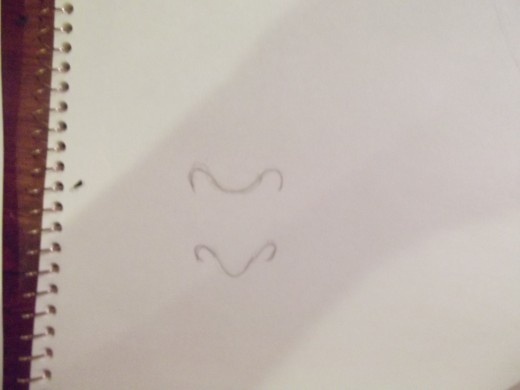
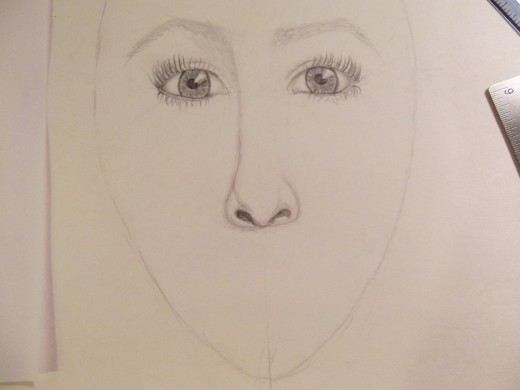
The Nose
About half-way between the eyes and the chin is where the bottom of the nose will be placed. Start by lightly sketching in the bottom line. Think of the line as the letter m that has been smushed flat and spread out. The flare of the nostrils should align with the inside corner of the eyes. To put in the shapes of the bulb of the nose and nostrils, use shading and not harsh lines.
The Mouth
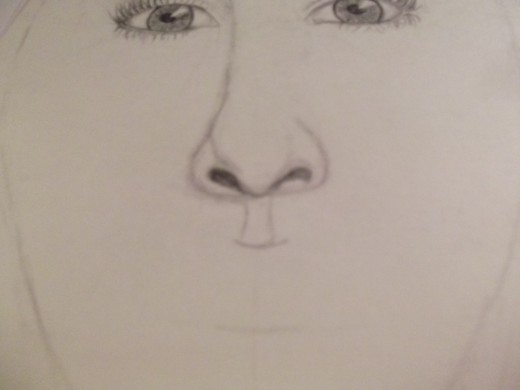
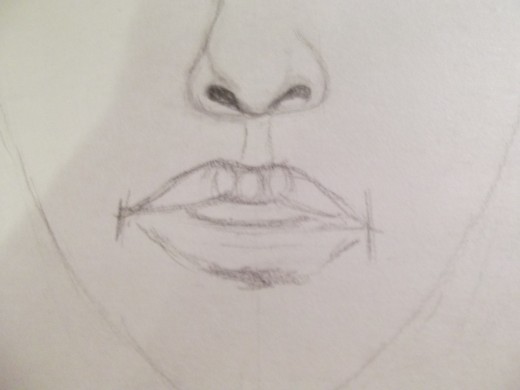
The Mouth
Draw in the two lines that come down from the nose to the top of the lips. The corners of the mouth will align with the center of the eyes if the face is not smiling. The lower lip will be a little thicker in the middle than the top lip. The lower lip will reflect more light, so the top lip will be slightly darker. The line for the top lip is a little longer than the bottom lip. I always start by drawing the indentation in the middle of the top lip. Once the shape is the way you like it then add shading and small lines that follow the curve of the lips.
For a mouth that is slightly open you will need to add in lines for teeth. Darken the lip lines that touch the teeth to add a shadow.
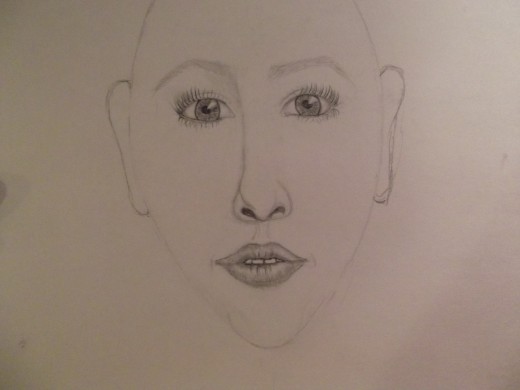
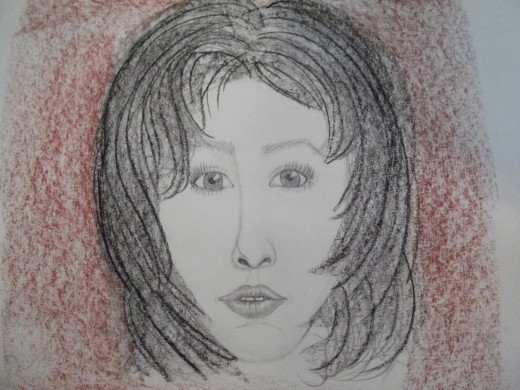
Finishing Touches
Now step back and look at the overall picture. Change and refine until it looks right to you. Depending on the hairstyle you choose, you may want to add ears. The top of the ears generally align with the eyes and the bottom of th ears are near the mouth.
I go in with a very dark pencil or black gel pen and add a dot of black in the tear ducts and add some black to the outer corner of the eyes. I darken the pupil, the black area in the mouth and nostrils. For female portraits, I will often darken the upper lash line.
While I enjoy drawing random faces to practice, I usually work from a photograph. Learning how to adjust the basic formula for proportions to a particular face takes practice. Also, with a photograph you do not need to guess about shading and form; simply follow the picture.
Compare your first sketch to the one you just completed. Do you see any improvement? Which areas would you like to improve? I would love to read comments about your experience.
Practice, Practice, Practice
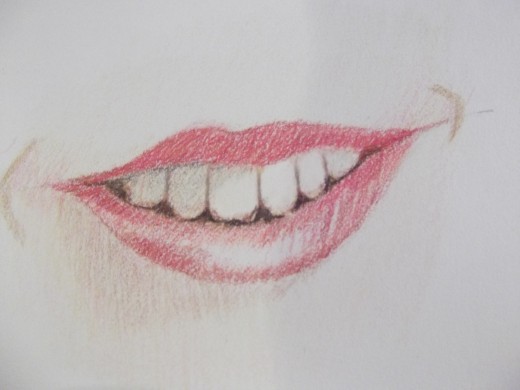
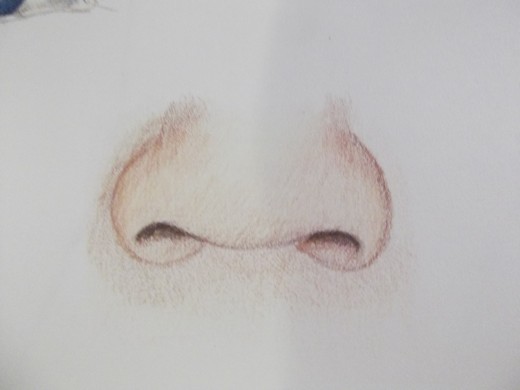
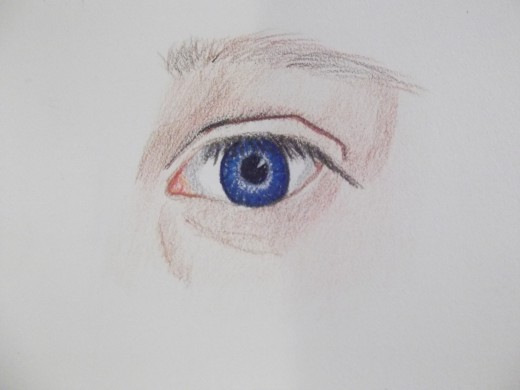

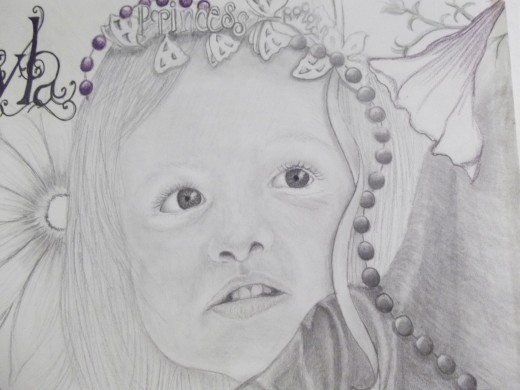
Practice, Practice, Practice
Don't be afraid to practice parts of the face separately. Drawing the face will become easier when you are comfortable with each part. Look through magazines and newspapers for interesting face pictures and practice. Once you are comfortable with the basics, you can start to experiment with highlighting and shading to give the face a more dimensional look.





